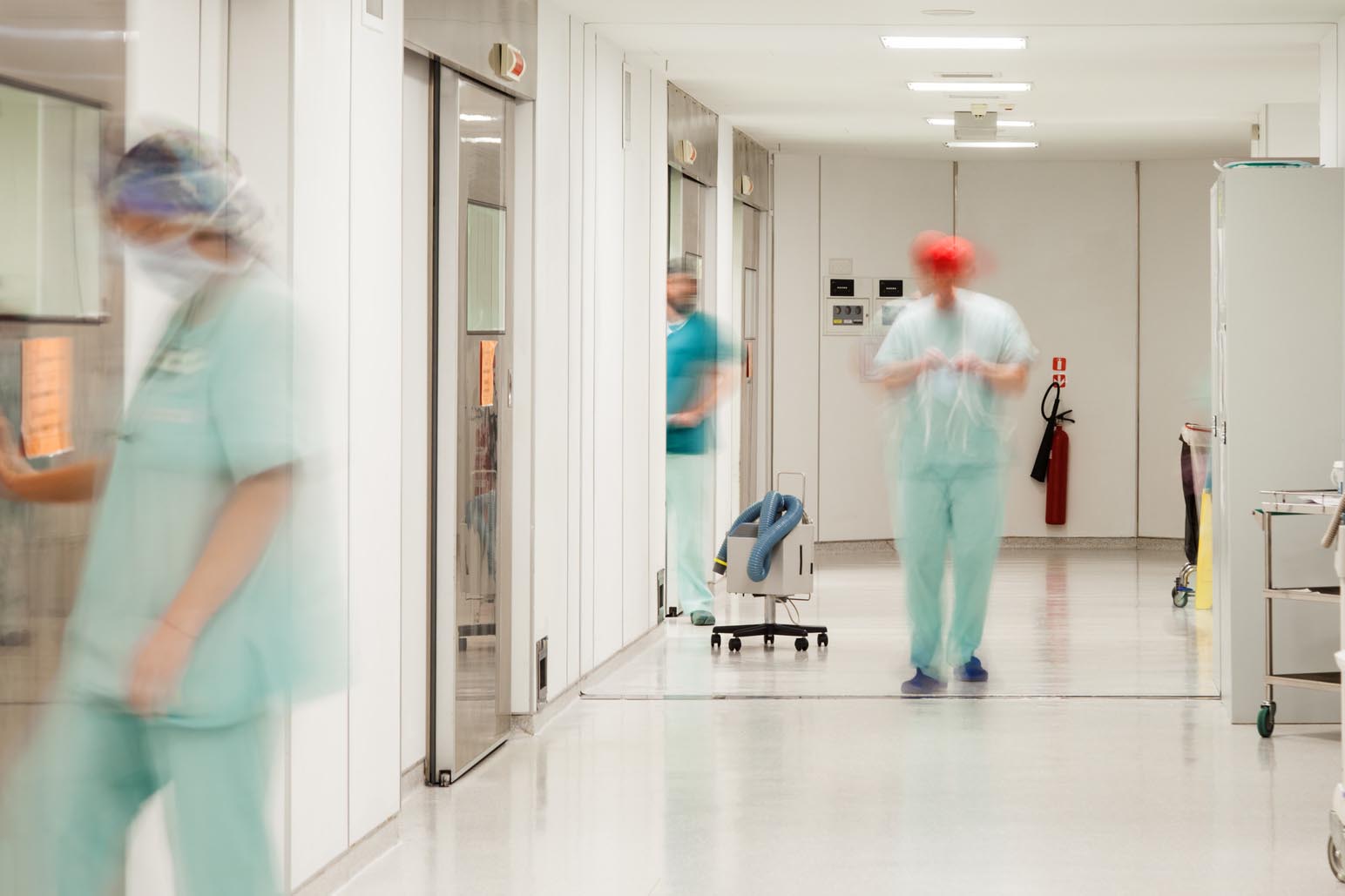-
What is already known on this topic
Many hospital-acquired infections are transmitted by microbes, often resistant to drugs, that contaminate hospital surfaces. Given the limitations of conventional chemical disinfectants, scientists have focused on the use of probiotics, whose action can stably reduce pathogens but is slow and non-specific. -
What this research adds
In vitro and in situ tests show that combining probiotics with bacteriophages can rapidly reduce pathogenic bacteria and keep them at low levels over long period of times. -
Conclusions
A combined probiotic-phage system could be used in hospital sanitation protocols, leading to the effective and safe elimination of drug-resistant pathogens from the environment.
Combining probiotics with bacteriophages could improve hospital sanitation practices by eliminating in a rapid, safe, and long-lasting manner drug-resistant pathogens, which cause many hospital-acquired infections. This is the conclusion of a study led by Maria D’Accolti at the University of Ferrara and recently published in Infection and Drug Resistance.
Hospital-acquired infections are a major public health concern, as they affect the clinical outcome of up to 15% of patients.
Hospital surfaces are contaminated by pathogens, often drug-resistant, which are not stably eliminated by conventional sanitation. Besides having a high environmental impact, chemical disinfectants can contribute to the selection of both disinfectant- and antibiotic-resistant pathogens.
To address this problem, a team of researchers, which included some of the authors of this study, has recently developed a sanitation system based on spores of probiotic Bacilli. But the system, which relies on competitive antagonism, is slow and doesn’t act against specific microbes.
On the other hand, bacteriophages have shown a rapid action against specific foodborne bacteria, including drug-resistant S. aureus and E. coli strains.
In this study, the researchers combined probiotics with bacteriophages and tested their efficacy against the most common hospital-acquired bacteria: S. aureus, E. coli, and P. aeruginosa. The target bacteria included strains obtained from the American Type Culture Collection (ATCC) and multi-drug resistant (MDR) strains isolated from hospital surfaces. The team then carried out decontamination tests in vitro and in situ.
Phage susceptibility of tested bacteria
The researchers analyzed all bacterial targets for phage susceptibility and showed that each phage stock caused the lysis of ATCC strains as well as MDR isolates, albeit with slightly less efficiency.
Decontaminating potential of phages
To carry out the decontamination assays, the team tried to achieve contamination conditions comparable to those detected on hospital surfaces. ATCC strains were spread on hard nonporous surfaces, such as sterile plastic, glass, and ceramic, at a density of 4×104 colony-forming units (CFU)/m2. Fifteen minutes later, the researchers applied phage preparations onto the contaminated surfaces. After 1, 3, 6, and 24 hours of incubation at room temperature, the researchers tested each surface for bacterial contamination using specific agar plates for sampling. In parallel, the researchers tested a chemical disinfectant.
- Phages reduced viable bacterial cells to about 90% on contaminated surfaces, regardless of surface type (ceramic, plastic, glass) and bacterial species
- A considerable reduction was detected 1 hour after treatment at 10 multiplicity of infection (MOI). (MOI is the ratio of phages to bacteria.)
- Time and higher MOI increased phage efficiency
- Almost no bacteria were detected after 6 hours of incubation with phages at 1000 MOI
- Disinfectants reduced the number of bacterial cells in the first 3–6 hours, followed by detection of viable bacteria after 24 hours, which suggests a bacteriostatic, rather than bactericidal, effect
Phage effectiveness against MDR isolates
To assess phage activity, the researchers also used MDR S. aureus, E. coli, and P. aeruginosa isolates collected from hospital surfaces.
Similarly to the results obtained with ATCC strains, phages significantly reduced MDR isolates on treated surfaces.
Phage stability in probiotic detergent
To determine whether phages could be used in combination with probiotics, the team tested phage stability in a previously developed detergent containing spores of probiotic Bacilli. Phages retained 100% activity up to 7 days after the detergent was diluted with sterile water.
Phage/probiotic decontaminating efficacy in situ
The researchers carried out decontamination assays in situ, using S. aureus as the target pathogen. First, they spread a culture of S. aureus at a density of 102 CFU/mL on a bathroom sink, and then sprayed on the sink either the probiotic-based detergent alone, the detergent added with anti-staphylococcal phages at 1000 MOI, or phages alone. Finally, the researchers tested surface contamination.
- Treatment with phages alone significantly reduced the number of bacterial cells by about 90% after 1 and 24 hours, as observed in in vitro assays, but the bacterial reduction was not maintained over time (15 days after treatment)
- As expected, treatment with probiotics alone started to have an effect after 3 days and resulted in a 75±6% reduction of bacterial cells after 15 days
- The combined use of phages and probiotics caused a rapid reduction of bacterial cells (-94±4% in 1 hour), which persisted even after 15 days.
Combining probiotics with bacteriophages could stably eliminate pathogens from hospital surface, reducing the incidence of hospital-acquired infections. This approach opens new perspectives for the development of effective and safe hospital sanitation systems.











